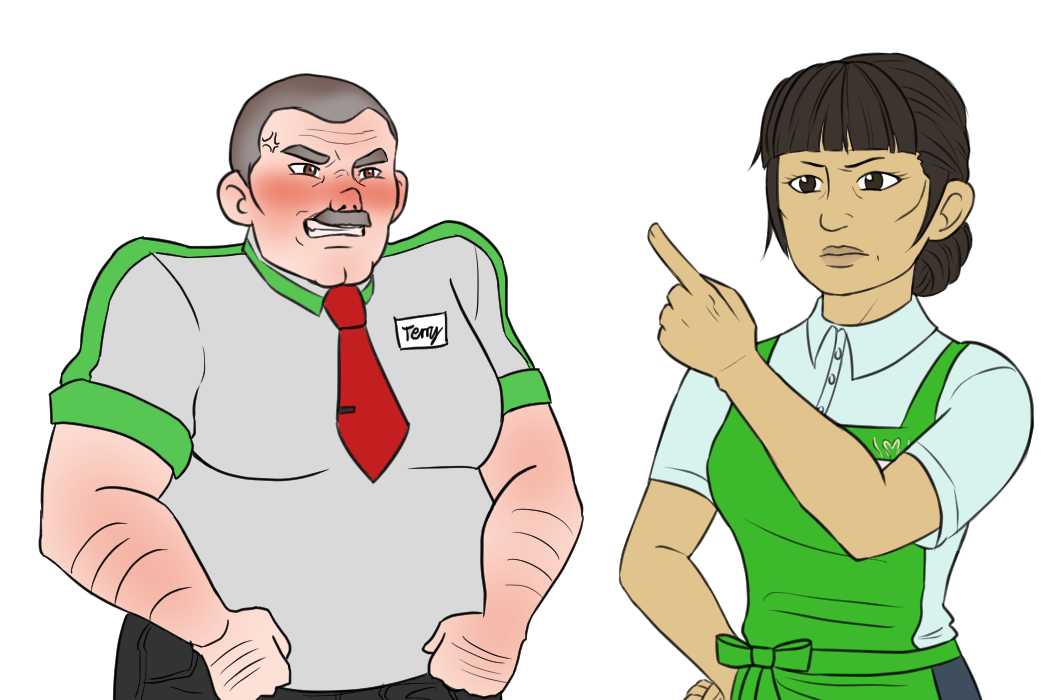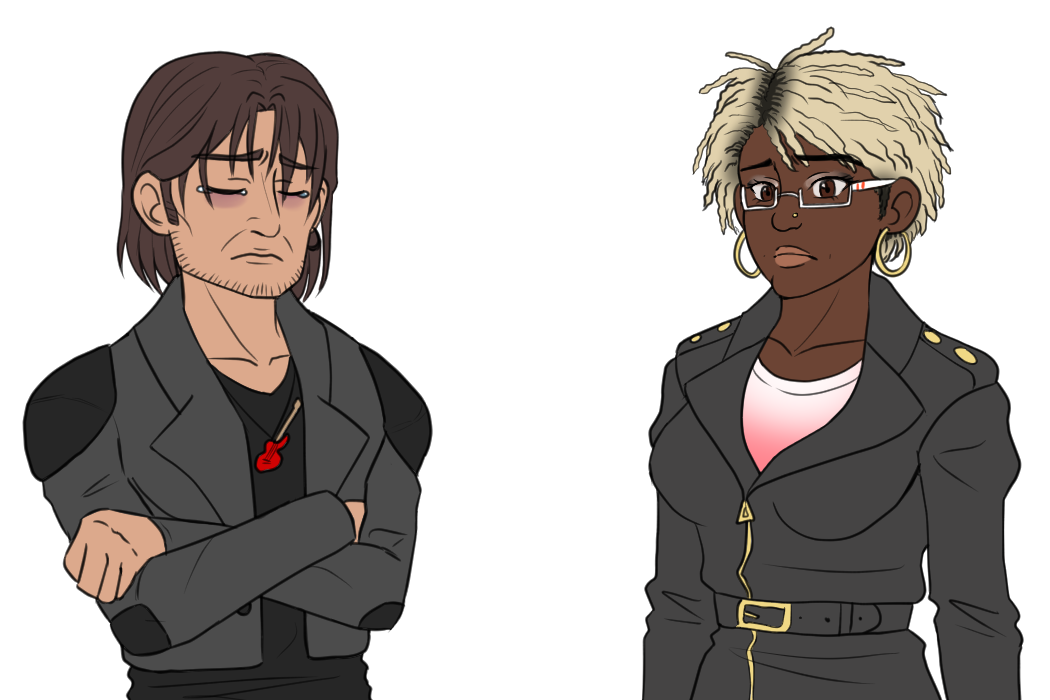An Insight Into Game Development:
Character Personalities
In a game that focuses on dialogue, the characters are crucial. To make the dialogue interesting, the parties of the conversation need to have distinct personalities and not be cardboard cutouts too similar to each other. Although, it is important to give the characters something to talk about, so common interests are a good idea.
Emotions: A Day In A Life’s characters have different personalities that are expressed by their appearance and interests. Some interests are the same between characters to, as previously mentioned, give them something to talk about and bond over. Still, each character is unique with their own traits, good and bad, and unique way to react to things.
Since the game’s theme is emotions, every character has an expression for each of the central emotions. The expressions are one way to show the personalities. As an example, the image below shows Terry’s more explosive anger (when he actually gets angry, he gets angry) next to Susie’s more strict frustration.

Below is another example, this time of sadness. The image shows Patrick’s grief and Alice’s more collected disappointment. This example also shows that generally more expressive characters like Alice can have expressions that are a bit more muted, depending on which emotions are more dominant for their personality.

Hopefully, this gave you an idea of how we have approached the characters and their personalities in Emotions: A Day In A Life. We would love to go into more detail about every character and emotion, but we want you to experience things for yourself in-game without spoilers.
Be on the lookout for the character introduction for the main character, Jay, this Thursday.
Emotions: A Day In A Life releases on Sunday the 8th, this week.

